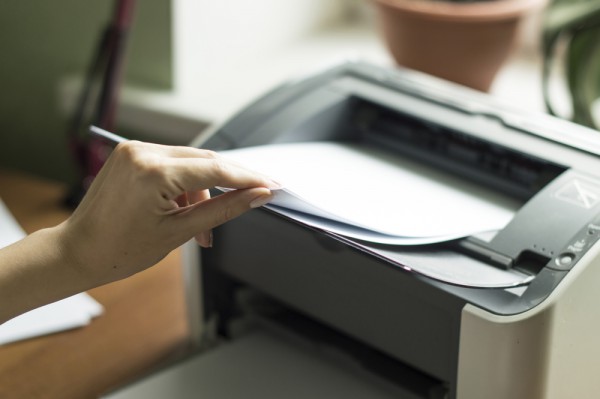How to keep customers safe with the correct print security strategy

Today’s Wi-Fi printers possess an array of features that make printing easy, which are especially useful in a world where remote working is commonplace and employees use a range of different devices for producing documents. Despite their advantages, there remain some serious security gaps that hackers can easily exploit if an organization doesn’t have a robust print security strategy in place.
While most businesses do well when it comes to protecting core IT infrastructure including computers, servers and applications, they do often fall short when it comes to secondary assets such as multifunction printers (MFPs). With cybercriminals constantly circling and searching for different ways to infiltrate a company’s network, unsecured connected printers can be a key point of weakness leading to a major breach.
How cybercriminals can exploit printers
Printers might not seem like an obvious entry point for a cyberattack. However, the rapid transformation of the workplace in the last couple of years to encompass remote working and incorporate emerging technologies means more printers are connected to both private corporate networks and the public internet.
The very nature of a wireless or internet-connected printer provides, in theory, a back door for hackers to break into a network and infect critical systems. Further, when remote workers print business documents from personal printers, they don’t always have access to secure shredding services that they possess when in the office, meaning confidential information could be inadvertently leaked.
All of this leaves businesses vulnerable to long-term business disruption, reputational damage, revenue loss and failure to comply with GDPR rules. Therefore, it is the responsibility of all businesses and their partners to prioritize print security.
So what can organizations do to put the necessary protections in place?
How to protect your business
Fortunately, there are several actions businesses can take to make sure their employees and customers remain secure and compliant. The key is to build resilient security from the ground up, ensuring every element of the network is hardened against attack and protected by multiple layers of security to mitigate threats.
Businesses must make sure all their employees are up to speed with the latest anti-virus and anti-phishing software installed on all endpoint devices, including MFPs, as this will produce a reliable first line of defense against potential cyberattacks. It’s also important to train employees to recognize malicious emails or attachments, to ward off threats such as ransomware.
Examples of further crucial measures to take include implementing print management software to provide employees with access to secure document release capabilities, as well as ensuring that all data that travels across print networks is encrypted from end to end. This would make certain that confidential data is protected at all stages and customers have an effective tool for preventing fraud.
To further protect printers, remote employees can disable Wi-Fi printing on their home printers, switch off their printers when not in use, and avoid printing important corporate documents at home. Organizations can help by removing personal printers from VPN connections, preventing employees from using personal printers in the first place.
As offices reopen and a sense of normality returns, print’s role in the business is increasing in importance. If organizations take steps now to shore up their print security, they will stand the best possible chance of staying a step ahead of cybercriminals.
Photo Credit: Gorvik/Shutterstock

Martin Fairman is Group Sales & Marketing Director at KYOCERA Document Solutions UK